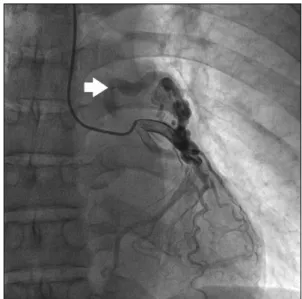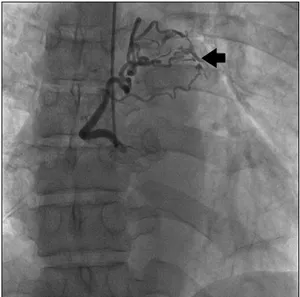Korean J Thorac Cardiovasc Surg 2014;47:152-154 □ Case Report □ http://dx.doi.org/10.5090/kjtcs.2014.47.2.152 ISSN: 2233-601X (Print) ISSN: 2093-6516 (Online)
− 152 −
Department of Thoracic and Cardiovascular Surgery, Kosin University Gospel Hospital, Kosin University College of Medicine Received: December 4, 2013, Revised: January 6, 2014, Accepted: January 7, 2014
Corresponding author: Seong Ho Cho, Department of Thoracic and Cardiovascular Surgery, Kosin University Gospel Hospital, Kosin University College of Medicine, 262 Gamcheon-ro, Seo-gu, Busan 602-702, Korea
(Tel) 82-51-990-6466 (Fax) 82-51-990-3066 (E-mail) aorta007@naver.com
C
The Korean Society for Thoracic and Cardiovascular Surgery. 2014. All right reserved.
CC

